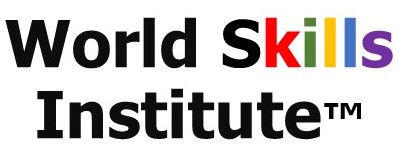
Leadership implications in complex projects: The Boeing DreamlinerProject Management, Project Control, Earned Value Management (EVM)
Leadership implications in complex projects: The Boeing Dreamliner and Jim
McNerney1
Gina Vega
Organizational Ergonomics
Note to Faculty: There is a teaching note available to faculty only for this case. To obtain the document,
please request it directly from the PMITeach.org administrator at pmcurriculum@pmi.org on your
school letterhead.
In defense of criticism of Boeing’s 787 production delays, CEO Jim McNerney explained:
We are trying to come up with the strongest set of partnerships we can with the people that
supply our major systems and structures. In defense, we are trying to respond to the pressures
of governments buying fewer things at lower prices, with less favorable contract terms. And that
pressure cannot just stop at Boeing. We have to find willing partners [to share the burden]. And
on the commercial side, low-cost carriers and a very flattish global economy leads you to the
same conclusion. So the ‘no-fly list’ is people who don’t want to play ball, who only want to hide
behind the contractual language of their current programs. We’re going to give those who do
want to work with us more business—or we’ll move some things in-house. This is a not a rape,
pillage and plunder exercise. This is the reality we all face. The majority of [suppliers] are
beginning to have productive discussions with us. We have some holdouts, people who take the
position that the pressure should only be absorbed by Boeing, notwithstanding the fact that 65
percent of most of our airplanes are built by suppliers…we both have to demand lots of
productivity [improvements] to offset price pressure. Those that work with us in that way will
find more volume. We are the biggest player. My message is, ‘Don’t bet against us.’i
The Boeing Dreamliner
Boeing Corporation was one of the world’s largest manufacturers of commercial aircraft, ranking 27th
on the Fortune 500 list in 2016. When it announced the delivery of its first 787 Dreamliner transporter
to its first customer, All Nippon Airways, in September, 2011, it was almost 40 months later than
originally planned, after a long series of unexpected delays. The actual development cost of the project
had been estimated at about US$40 billion but came in over twice the original estimate. One year later,
a malfunction was discovered in one of the aircraft’s lithium batteries, which caught fire after takeoff.
These problems led to months of grounding, imposed by the FAA (Federal Aviation Administration), of
the entire Dreamliner fleet already in service.
The Dreamliner was designed to be a revolutionary project in terms of physical characteristics,
technology, management style, financing, design and engineering management, quality assurance, and
assembly processes. Many of these initiatives were intentionally taken on to benefit from new
developments in aviation technology and to speed up design and development; however, they posed
unexpected challenges for both the company and the project team.
1 This case is based on Shenhar, A.J., V. Holzmann, B. Melamed & Y. Zhao. (2016). The challenge of innovation in
highly complex projects: What can we learn from Boeing’s Dreamliner experience? Project Management Journal,
Vol. 47, No. 2; 62-78.
A New Organizational Paradigm
Boeing adopted a new organizational paradigm for the development of Dreamliner and decided to
outsource an unprecedented portion of the design, engineering, manufacturing, and production to a
global network of 700 local and foreign suppliers. With more than 70% foreign development content,
this decision turned Boeing’s traditional supply chain into a development chain. Tier-1 suppliers became
responsible for the detailed design and manufacturing of 11 major subassemblies, while Boeing only did
system integration and final assembly. Figure 1 lists the project’s major subassemblies and their tier-1
suppliers.
Furthermore, Boeing came up with a new risk and revenue sharing contract with its suppliers, called the
“build-to-performance” model (as differentiated from the more typical “build-to-spec” or “build-toprint” models). According to the model, contract suppliers bore the non-recurring R&D cost up-front,
owned the intellectual property of their design, and got paid a share of the revenues from future aircraft
sales. Table 1 summarizes the main features of this model. Under this model, the suppliers’ roles were
dramatically changed from mere subcontractors to strategic partners who had a long-term stake in the
project. This model created some risks, which caused extensive integration problems and additional
delays.
Finally, Boeing employed a new assembly method. Subcontractors were required to integrate their own
subsystems and send their preassembled subsystems to a single final assembly site. The goal was to
reduce Boeing’s integration effort by leveraging subcontractors to do more work compared with
previous projects. However, many of these subcontractors were not able to meet their delivery
schedules due to lack of experience in subsystem design and integration, as well as insufficient
guidelines and training. As a consequence, parts and assemblies, which were sent to Boeing for
integration, were missing the appropriate documentation, including instructions for final assembly.
Unanticipated Consequences
Supply chain and design delays increased, as did Boeing’s financial losses, including penalties for late
delivery of the aircraft. CEO McNerney had to face some hard facts based on earlier decisions. He
acknowledged that his new paradigm may have been flawed, “We got a little bit seduced that it would
all come together seamlessly and the same design rules would be applied everywhere in the world and
corners wouldn’t be cut and financial realities wouldn’t hit certain folks.”ii
McNerney’s approach to workers, suppliers, and labor resources was notably off-putting, according to
many in Washington State, Boeing’s corporate home. Since 2011 when Boeing opened its non-unionized
South Carolina assembly plant where salaries were approximately $10/hour less than those of the
unionized workers in Washington Stateiii, worker relationships have been troubled. While admirers have
touted his efficiency and ability to deliver profits, alienated professionals at every level, along with union
members, have described McNerney as “cold-blooded.” One labor specialist stated, “A lot of employees
feel top management doesn’t value them, treats them as expendable…[creating an atmosphere of]
lowered trust, anger and disgruntlement.”iv According to Richard Aboulafia, noted aerospace specialist,
“Management believes if it continues to squeeze suppliers and labor, the problem[s] will be
solved. Again, the track record here is not great. Most of the manufacturing world tell a very
different story. Whether it’s with cars, aircraft or turbines, productivity improvements often
come from the shop floor. That means convincing the people who build things to identify ways
to reduce scrap, improve work flow and eliminate defects. To promote the kind of process
improvements that happen in the factory, a work force needs incentives such as profit-sharing
or other compensation. At the very least, machinists and engineers need to believe their work is
valued. Taking away pensions at a time of record sales is simply a bad way to motivate workers
to go the extra mile. Boeing right now embodies a strange combination of very good and very
bad.” v
McNerney’s management style created its own problems. He vacillated between maintaining his
dispassionate, hands-off general management style with multiple-times per day meetings with
executives during the Dreamliner grounding crisis. His revolving door policy for managers in charge of
the 787 project (four in as many years)vi generated a sense of uncertainty at all levels in the company
and increased pressure to meet goals quickly. This focus on urgency caused him to reflect, after having
resolved the major problems in the Dreamliner, that the plane could have been completed sooner had
Boeing listened more to the customer and less to innovative technology. He said, in a rare interview in
2014, “What I would like to have done is pursued 70 percent of the technology that still would have
satisfied 95 percent of [customer desire]. It would have gotten to them quicker, and it would have cost
us less…You get excited about these projects, and things creep into the design and you lose discipline
sometimes. We just need to be reminded about that.”vii
As described by an anonymous former Boeing executive, “The sense I always got from him in meetings
is that it could have been any business…If we’d been making cameras or autos or doing bond trading, it
would have all been the same to him. The net effect is distancing from the people who come to work
there every day, who bring their hearts and souls to it and want to make it more than a job.”viii
References
Aboulafia, R. (March 9, 2015). Boeing should not lean on labor to cover 787 losses, Aviation Week &
Space Technology. Vol 177, Issue 9: 1.
Anselmo, J.C., C Joseph, and G. Norris. (June 17, 2013). ‘Don’t bet against us,” Aviation Week and Space
Technology. Vol 175 Issue 20: 72.
Anselmo, J.C. and G. Warwick. (July 14, 2014). ‘Not backing off,’ Aviation Week and Space Technology.
Vol 176, Issue 24: 62-64.
Gates, D. (December 1, 2014). Boeing boss Jim McNerney’s turbulent tenure, Seattle Times.
http://www.seattletimes.com/business/boeing-boss-jim-mcnerneyrsquos-turbulent-tenure/ (Retrieved
May 30, 2016).
Hymowitz, C. and T. Black. (January 18, 2013). It’s not his mess, just his to clean up, Bloomberg
BusinessWeek. Issue 4314: 14-16.
Ostrower, J. and J.S. Lublin. (January 24, 2013). The two men behind the 787, The Wall Street Journal.
http://www.wsj.com/articles/SB10001424127887324039504578260164279497602. Retrieved May 30,
2016.
Shenhar, A.J., V. Holzmann, B. Melamed, and Y. Zhao. (2016). The challenge of innovation in highly
complex projects: What can we learn from Boeing’s Dreamliner experience?, Project Management
Journal. Vol 47, No. 2: 62-78.
Wilhellm, S. (April 8, 2015). Boeing’s South Carolina workers make $10 per hour less than those in
Everett, Seattle News. http://www.bizjournals.com/seattle/news/2015/04/08/boeings-south-carolinaworkers-make-10-less-per.html (Retrieved May 30, 2016).
i Anselmo,et al. (6/17/2013). Don’t bet against us.
ii Ostrower, J. and J.S. Lublin. (1/24/2013). The two men behind the 787.
iii Wilhellm, S. (4/8/2015). Boeing’s South Carolina workers make $10 per hour less than those in Everett.
iv Gates, D. (12/1/2014) Boeing boss Jim McNerney’s turbulent tenure.
v Aboulafia R. (3/9/2015). Boeing should not lean on labor to cover 787 losses.
vi Hymowitz, C., T. Black. (1/18/2013). It’s not his mess, just his to clean up.
vii Anselmo, J.C. and G. Warwick. (7/14/2014). ‘Not backing off.’
viii Gates, op cit.
Figure 1: 787 Project’s Tier-1 Suppliers

